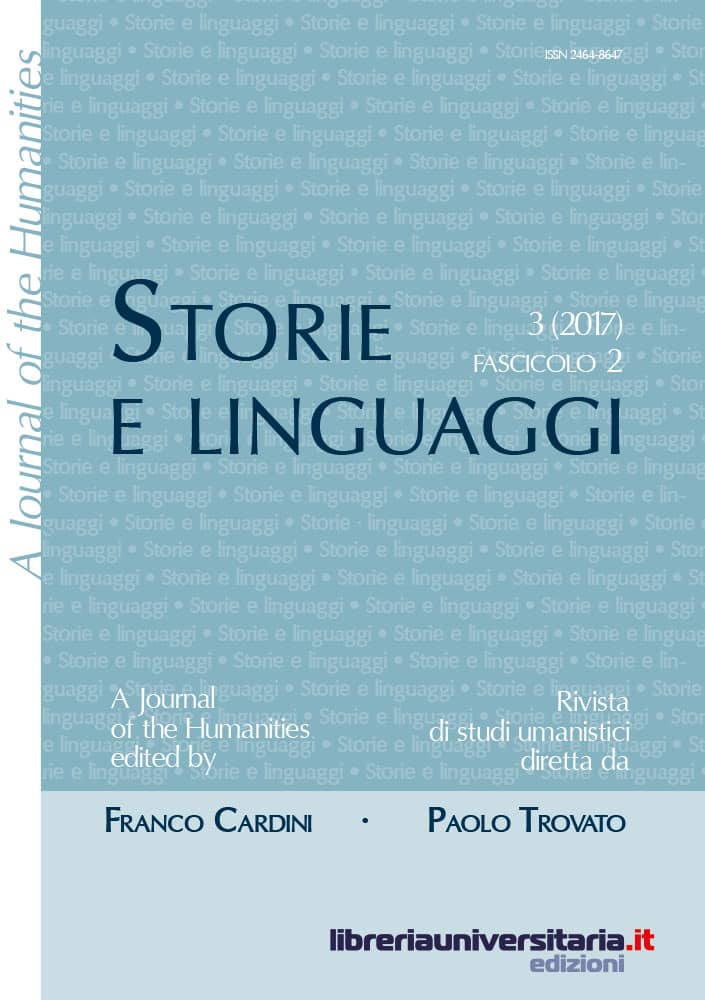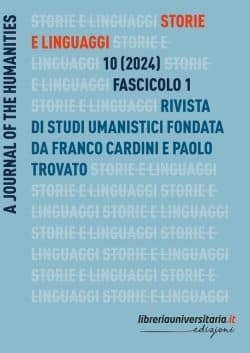Indice
The woods’ groom. Cultural meanings of the bear in the ancient world
With an excursus through ancient sources, the text aims to reconstruct the identity of the bear in the ancient Greek and Roman world, from a perspective of comparison with other and modern cultures. In fact, this creature has been transversally perceived and represented as a quasi-human being, which often replaces man in prerogatives and, in particular, in loving relationships: and to unveil the unexpected portrait of a “groom of the forests” for young human girls, wild and dangerous, is first of all the ancient myth about the misadventures of the girl Polifonte by Antonino Liberale in his Metamorphosis, of which the article wants to give his particular interpretation.
Brauron’s bear cubs.
At Athens in the classical era a rite in honor of Artemide Brauronia was documented to which young girls had to undergo before the wedding: the rite of making the bear. The reconstruction of the rite is highly problematic. However, it is certain that the bear, at least at a symbolic level, played a central role. It also turns out that this symbol came to intertwine with another: the krokotos, that is, a saffron-colored dress. This ritual act, carried out in the cult of Artemis was an essential condition for the integration of girls into the civic community in their role as brides and mothers of future citizens.
The bear in Celtic and German traditions.
The study examines some aspects of the presence of the bear in cults and mythologies of Antiquity and the Middle Ages, showing that it is difficult to make a simple reading of the theme. In particular, one cannot speak of a “typical” Celtic and Germanic traditions about the symbolic relationships between men and bears nor it can be said that the bear was – before the age of Charlemagne and in a “Germanic” context – the absolute model of kingship.
The bear in shamanic traditions: Siberia and Japan.
Among the peoples of the Arctic and Sub-Arctic areas, who live their lives in close and intimate relationship with the surrounding natural environment, the spirits of some animals are considered sacred. Among them we find the bear, which represents strength, courage, and loyalty. The bear is feared, but also worshipped, hunted and killed at the same time, and special rituals are dedicated to him, so as to obtain his benevolence. In the same cultures, the presence of shamanic rites is very frequent as well. Both phenomena are related to the search for equilibrium of resources, that such a hostile environment only dispenses to the men who prove to deserve them. This article describes the bear cult in the cultures of some areas of Siberia, Scandinavian Europe and north of Japan (Hokkaido Island), told by the writings of Stephen Sommier and Fosco Maraini, and the objects they donated at the Museum of Anthropology, University of Florence.
The bear in folklore.
In the light of the recent study of Michel Pastoureau L’Ours. Histoire d’un roi déchu, which assembles sources from ancient up to contemporary times, I have tried to understand the way European folklore have dealt with the symbol of the bear, discovering that, as for many symbols, there is not a simple or unique way to read it. Many traditions we are brought to think as ancient, seem so be quite recent. And sometimes a story can bear many meanings, depending on the audience that hear it or read it.
Hunting the bear in medieval forests (namely, on the uncertain borders between human and non-human)
In early and high middle ages, hunting the bear was not an ordinary matter but a meaningful practice compelling man to face the problem of the border between human and animal nature. Bear was conceptualized not just as beast but as a superhuman creature, often a model for warriors; bears were sometimes even ancestors of powerful and strong men, as Svein Estridsson of Denmark and Siward of Northumbria. The bear’s humanization was a problematic issue suggesting that the borders of human nature were not perfectly separated at least until XII century.
The saint, the saltus and the bear. The Christian desacralization of nature
The relationship between saints and animals, in particular the bear, has undergone remarkable changes during the Middle Ages: from an early peaceful coexistence between bears and hermits, a progressive “demonization” of the animal has been going, highlighting its feral nature and its character of vice bearer, mainly the lust. Thus, the process of christianization has increasingly led to the exorcism of folklore elements concerning the animal and to the progressive affirmation of its inferiority and subordination to man. The evolution of hagiographic literature clearly shows this process.
You are such a bear. Individual and collective identitary topics in heraldry
A heraldic history of the bear, between history and legend, throughout Europe, taking as a point of departure Michel Pastoureau’s book, devoted to the former king of the animals: from feudal families, to Russian principalities and city institutions. The symbolic story of the Pistoia bear (“micco”), with his peculiar totemic and symbolic meaning, and with his curious recent graphic versions closes the review. The Pistoia bear is proof of the almost millenary presence of an iconic code which has become popular tradition.





